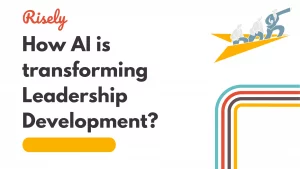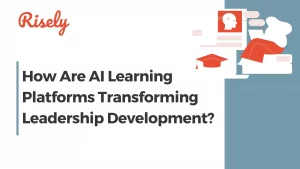Are you ready to pass the baton? Succession planning is a critical process that ensures a smooth transition of leadership within organizations. But have you ever wondered about the challenges that come along with it? What hurdles do organizations face when identifying and grooming future leaders?
In this blog, we delve into the world of succession planning challenges. From overcoming resistance to change to fostering diversity and managing knowledge transfer, we explore organizations’ roadblocks. Join us as we uncover the strategies to tackle these challenges head-on and pave the way for a strong and sustainable leadership pipeline. Get ready to unlock the secrets of effective succession planning in the face of adversity.
Let’s dive in!
8 Succession Planning Challenges
Succession planning challenges can significantly impact an organization’s Human Resource Management (HRM) practices. Here are some effects that these challenges can have on HRM: Talent acquisition and recruitment Succession planning challenges can affect HRM’s ability to attract and recruit top talent. If an organization struggles to identify and develop high-potential candidates for future leadership roles, it may face difficulties filling critical positions when vacancies arise. HRM professionals need to address these challenges by implementing effective talent acquisition strategies and partnering with managers to ensure a robust pipeline of potential successors. Strategic Leadership Pipeline Establishing a strategic leadership pipeline presents a succession planning challenge that involves identifying, developing, and nurturing a pool of talented individuals to assume critical leadership roles in the future. It requires a systematic approach to identify high-potential employees, provide targeted development opportunities, align their growth with organizational goals, and ensure diversity and inclusion. Additional challenges include balancing short-term talent needs with long-term succession planning, retaining top talent within the pipeline, and fostering a culture of continuous learning. Training and development Succession planning challenges often involve identifying and developing future leaders. This places an increased emphasis on HRM’s role in providing appropriate training and development opportunities. HRM professionals need to design and implement robust leadership development programs, mentorship initiatives, and learning opportunities to nurture the skills and capabilities of potential successors. Performance management Succession planning requires HRM to closely monitor the performance and potential of employees to assess their readiness for future leadership roles. However, challenges related to identifying high-potential individuals and overcoming biases may impact the accuracy of performance evaluations. HRM needs to ensure fair and objective performance management processes and provide regular feedback to employees to support their development and align them with succession planning goals. Diversity and inclusion Succession planning challenges can affect diversity and inclusion efforts within HRM. A lack of diverse representation in the pool of potential successors can hinder efforts to promote diversity at the leadership level. HRM professionals should proactively address biases, promote equal opportunities, and implement initiatives to foster diversity and inclusion in succession planning processes. Employee engagement and retention The effectiveness of succession planning can influence employees’ perception of fairness and opportunities for growth. If employees perceive limited career advancement prospects or unequal opportunities, it can impact their engagement and retention. HRM needs to ensure clear communication about succession planning processes, provide career development support, and offer transparent opportunities for growth to maintain employee motivation and commitment. Knowledge management Effective succession planning involves transferring critical knowledge and expertise from experienced leaders to successors. HRM is crucial in facilitating knowledge management processes and creating a culture of knowledge sharing. By implementing knowledge transfer strategies, fostering collaboration, and leveraging technology, HRM can ensure that valuable organizational knowledge is transferred and retained during leadership transitions. Change management Succession planning challenges often involve overcoming resistance to change. HRM professionals must possess change management skills to effectively communicate the importance of succession planning, address concerns, and engage stakeholders. By applying change management principles, HRM can minimize resistance and facilitate a smooth transition to new leadership roles. Overall, succession planning challenges can significantly impact various aspects of HRM, including talent acquisition, training and development, performance management, diversity and inclusion, employee engagement, knowledge management, and change management. HRM professionals need to proactively address these challenges to build a robust succession planning framework that aligns with the organization’s strategic goals and ensures the availability of capable leaders in the future.An example of HRM facing and overcoming Succession Planning Challenges
As organizations navigate the complex world of succession planning, they encounter numerous challenges that impact their Human Resource Management (HRM) practices. These challenges have far-reaching implications, shaping how organizations attract, develop, and retain talent. In a bustling city, a thriving company faces the daunting task of identifying potential leaders who can drive the organization forward. HRM professionals acquire talent by searching for individuals with the right skills and potential. However, they encounter difficulties in identifying these high-potential candidates, hindering their ability to secure the best talent. Recognizing the need for growth, HRM designs and implements comprehensive training and development programs. These initiatives focus on nurturing the skills and capabilities of potential successors, equipping them with the necessary tools to assume leadership roles. However, the challenges of bias and limited access to development opportunities hinder the effectiveness of these programs, impacting the organization’s ability to groom future leaders effectively. The importance of diversity and inclusion becomes evident as HRM strives to create a leadership pipeline that reflects the organization’s diverse workforce. However, existing biases and systemic barriers make identifying a diverse pool of potential successors challenging. HRM must actively promote diversity and equal opportunities and address barriers to ensure an inclusive succession planning process. As leadership transitions loom, HRM faces the challenge of knowledge transfer. The company recognizes the value of transferring critical knowledge and expertise from experienced leaders to their successors. However, capturing tacit knowledge and establishing effective knowledge-sharing processes is complex. HRM implements mentoring programs and knowledge-sharing platforms and encourages collaboration to bridge this gap. Check out “10-Step Succession Planning Checklist To Make A Smooth Leadership Transition“ Unexpected departures create a ripple effect, disrupting planned succession processes. HRM swiftly adapts, establishing contingency plans such as maintaining a talent pipeline and cross-training employees. These measures ensure that unexpected departures do not derail the organization’s progress or leave leadership positions vacant. HRM remains committed to the continuous evaluation and adjustment of the succession plan. Regular reviews enable HRM to effectively align the plan with evolving business needs and address emerging challenges. By embracing change management principles, HRM minimizes resistance and fosters a culture that values succession planning. In this dynamic journey, the challenges faced by succession planning significantly shape HRM practices. Through strategic talent acquisition, training and development initiatives, diversity and inclusion efforts, knowledge management, and effective change management, HRM navigates these challenges to build a robust succession planning framework, ensuring organizational continuity and long-term success.Strategies to Overcome Succession Planning Challenges
Overcoming succession planning challenges requires strategic approaches and proactive measures. Here are several strategies organizations can employ to address these challenges:- Establish a robust talent identification process: Implement a comprehensive system to identify high-potential employees early on. This can include assessments, performance evaluations, and feedback mechanisms to gauge employees’ skills, competencies, and leadership potential. By identifying promising individuals, organizations can focus their development efforts on grooming them for future leadership roles.
- Invest in leadership development programs: Develop structured leadership development programs that provide targeted training and mentorship opportunities to potential successors. These programs should cover various skills, including strategic thinking, decision-making, and people management. By investing in the growth and development of potential leaders, organizations can enhance their readiness to assume critical roles.
- Foster a culture of diversity and inclusion: Actively promote diversity and inclusion in all aspects of succession planning. This can be achieved by ensuring equal access to development opportunities, addressing biases in the evaluation process, and creating a supportive and inclusive environment where individuals from all backgrounds can thrive. Embracing diverse perspectives and experiences strengthens the talent pool and contributes to a more robust succession planning process.
- Implement knowledge management systems: Develop processes and systems to capture and transfer critical knowledge from experienced leaders to potential successors. This can include creating mentorship programs, establishing knowledge-sharing platforms, and encouraging cross-functional collaboration. By effectively managing and sharing organizational knowledge, organizations can minimize the impact of leadership transitions and ensure a smooth transfer of expertise.
- Foster a culture of continuous learning: Encourage a learning mindset throughout the organization. Promote ongoing professional development, provide opportunities for employees to expand their skills and knowledge, and encourage a culture of knowledge-sharing and collaboration. This helps to build a talent pool that is adaptable, innovative, and well-prepared to assume leadership roles when the time comes.
- Create a succession planning committee: Establish a dedicated committee or task force comprising senior leaders, HR professionals, and other relevant stakeholders. This committee can oversee the succession planning process, identify potential challenges, and develop strategies to address them. The committee should regularly review and update the succession plan, ensuring it remains aligned with organizational goals and responsive to evolving needs.
- Communicate and engage stakeholders: Effective communication is crucial throughout succession planning. Engage senior leaders, managers, and employees in open and transparent discussions about the importance of succession planning, its benefits, and the opportunities it provides. Address concerns and misconceptions, clarify expectations, and ensure all stakeholders are informed and involved.
Examples of Failures in Succession Planning
There have been notable failures in succession planning in various organizations. Here are a few real-life examples: Microsoft (2000) When Microsoft’s long-time CEO, Bill Gates, announced his plan to step down in 2000, the company’s succession planning faced a significant setback. Steve Ballmer, who was chosen as Gates’ successor, struggled to maintain the company’s competitive edge and missed critical opportunities in emerging markets. This failure of succession planning resulted in a decline in Microsoft’s market dominance and the need for a subsequent leadership change. General Electric (2001-2017) General Electric (GE) experienced several leadership failures during the transition from its iconic CEO, Jack Welch, to subsequent leaders. Each successor faced challenges in navigating the changing business landscape, resulting in declining performance and shareholder value. The lack of effective succession planning and the failure to identify leaders who could drive innovation and adapt to industry disruptions led to a significant decline in GE’s market position. Apple (1985-1997) Following the departure of Steve Jobs from Apple in 1985, the company struggled with ineffective succession planning. Multiple leaders were brought in but failed to provide the visionary leadership and innovation that had defined Apple under Jobs. The lack of a clear succession plan resulted in Apple’s declining market share and financial struggles until Jobs returned in 1997 and orchestrated the company’s remarkable turnaround. Ford Motor Company (2001) Ford Motor Company faced a succession planning failure when CEO Jacques Nasser was replaced by Bill Ford Jr., the great-grandson of the company’s founder. The abrupt change in leadership without a well-defined succession plan led to internal conflicts, strategic missteps, and declining profitability. The lack of a seamless transition and a comprehensive succession plan hampered Ford’s ability to adapt to changing market conditions effectively.Conclusion
The future is uncertain, but by acknowledging and addressing these succession planning challenges, organizations can build a strong leadership pipeline that weathers any storm. Imagine your organization as a mighty oak – with deep roots (a talent pool) and a healthy canopy (diverse, well-developed leaders). By implementing effective strategies, fostering a culture of learning, and continuously nurturing your leadership talent, you’ll ensure a smooth transition of power and continued success for generations to come. So, take the first step, cultivate your leadership forest, and watch your organization flourish for years to follow. Sign up for Risely for effective leadership development and understand the basics of being an effective manager to handle the team better.Focus on active listening to spot gender inequality and bias in your team.
Take the free active listening skill assessment to identify weak areas and get support.
FAQs
Why is succession planning difficult?
Succession planning can be challenging due to factors such as identifying suitable talent, predicting future needs, ensuring smooth transitions, managing resistance, and balancing organizational goals with individual aspirations and development.
What is the main barrier to an effective succession plan?
The main barrier to an effective succession plan is the lack of adequate leadership development and a comprehensive talent pipeline, which hinders the availability of qualified and prepared individuals to assume key roles.
What is the most common mistake in succession planning?
One common mistake in succession planning is focusing solely on high-potential individuals while neglecting the importance of cross-training and developing a diverse talent pool.






